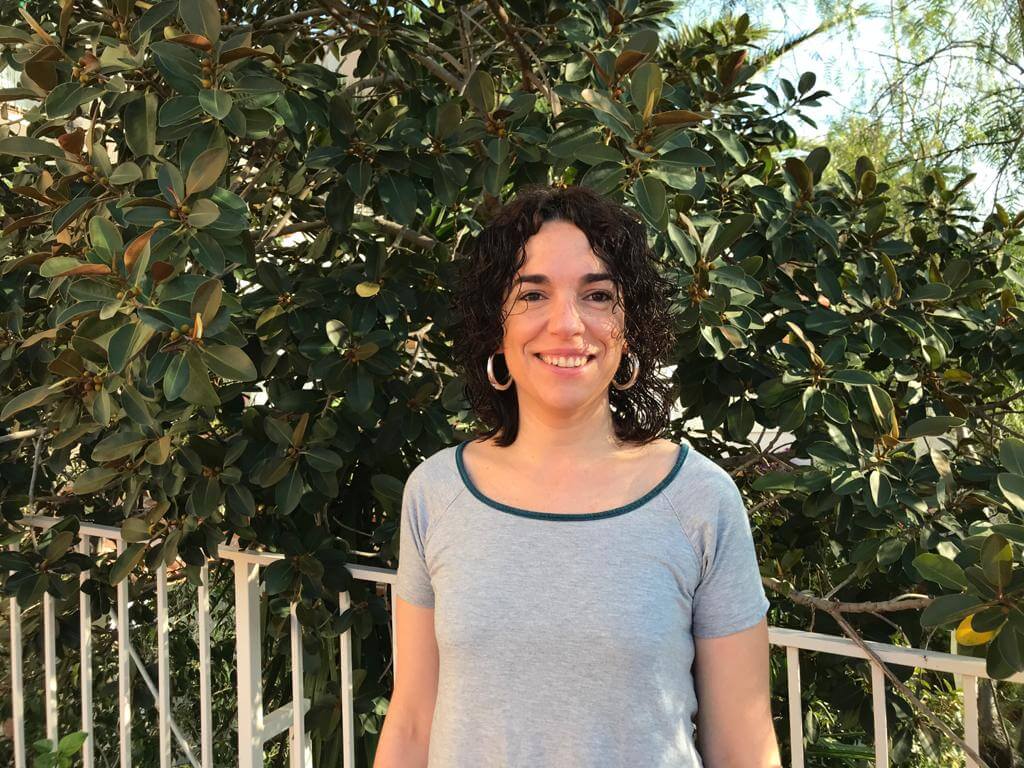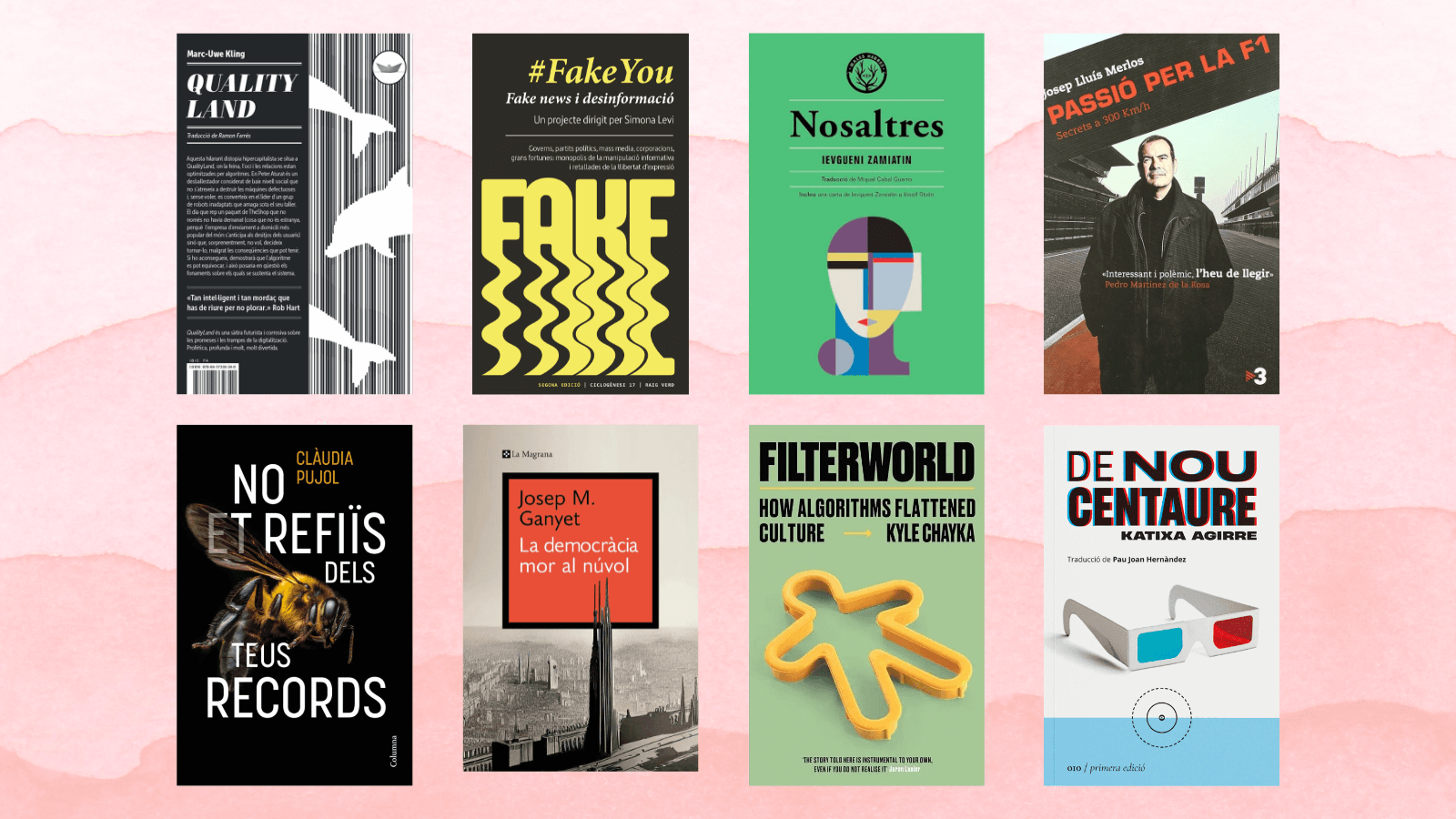Marina Massaguer: “Young people are no longer looking for one-way communication, but wish to participate and be able to leave a message on Dulceida’s Instagram”

We talked to philologist Marina Massaguer, co-author with Avel·lí Flors-Mas and Francesc Xavier Vila of the report “Catalan, YouTubers and Instagrammers. A starting point to promote the use of language”.
What do the report authors understand by digital diglossia?
It is the fact of thinking that Catalan or any other language is not valid enough to generate a specific kind of network content. For example, we have noticed that, apart from having little content in Catalan, what we have can be classified as a humour monoculture, that is, telling episodes of everyday life from a humorous point of view. That is fine, but then what happens is that it seems that other content that is widely consumed by young people, such as make-up tutorials or information about celebrities and gaming, cannot be created in Catalan due to a lack of references. And all this raises a whole series of inertias and consumer habits that strengthen this idea.
You also state that there is a shift in the younger audience, aged 16 to 24, towards the Internet.
There is, indeed. We based this on data published by the Catalan Audiovisual Council, where it says very clearly: the younger the population, the more audiovisual content they consume via networks like Instagram, for example. We think this is because Instagram includes many of the tools other networks include. You can follow both your friends and celebrities, make videos, share pictures, interact… It brings together a series of potential features that were more scattered in other networks. If all your friends around you have Instagram, you probably will as well. The more audience a network has, the larger it gets.
And how can Catalan squeeze in on the Internet with all those competitors?
The same goes for Instagram and languages: the more users a language has, the more users it attracts, as more content is generated. What goes around comes around. Thus, we have to achieve that Catalan also creates a space, a market, a circuit that, for obvious demographical reasons, does not compete on equal terms with Spanish, a global language with more than 400 million speakers. They are different scales.
You must understand that this diglossia is due, in part, to the lack of references …
They are emerging now! Maybe not as fast as in Spanish, but yes, they are arising. And everything seems to indicate that the situation will gradually improve in the near future. We have seen growth signs in the YouTuber, Instagrammer and TikToker market in Catalan. Miquel Montoro’s example is a case which shows that you can succeed by creating content in Catalan, and we also like to mention the case of Pol Gise’s success story, who boasts many views of his content in Catalan on both YouTube and Instagram. There are fiction series, such as Companys de Pis (Roommates) or the phenomenon of memes in Catalan. The success of Catalan content on the networks will probably not happen overnight: the breeding ground must be created for an ecosystem of its own to take shape.
The greater the offer the larger the potential market?
As the offer not only increases, but also achieves visibility, and products are attractive, consumer habits are generated in the audience, and the retailing circle is broken to give rise to a more favourable inertia for a medium-sized language like Catalan. We have to play in the Swedish, Finnish or Norwegian league, not in the Spanish one, whose potential comes is mainly based on the Latin American market. Opportunities for Catalan and other medium-sized languages can be achieved through joint initiatives, with which to reach agreements with major platforms to make these medium-sized languages visible.
But speakers of these medium-sized languages also tend to switch to English…
With these languages we share not only the same opportunities, but also the same disadvantages in order to compete in the global market. One of the world’s best-known YouTubers is PewDiePie, who is Swedish and speaks English. We have focused on the Finnish case, which is one of the most studied and whose speakers encounter problems that are very similar to those of Catalan speakers. They are a young population with a very high command of English and consumer habits in networks that are monopolised by this language. In our case, however, young Catalans have a much higher command of Spanish than of English. It is rather easy for Finns to consume content in English and for Catalans to consume content in Spanish. This, added to cosmopolitan ideologies and narratives claiming that, thanks to the great global languages, we all understand each other and we should try to be understood by as many people as possible, further reinforces the hegemony of dominant languages.
There is also the point of wanting to be part of global discussions, right?
Young people, both those who generate content and those who consume it, somehow identify with what we have called imagined virtual communities, if we take the term used by Finnish researchers. Young people want to be part of a global community of video game creators or players. The relevance of national belonging decreases, whereas that of belonging to virtual communities organised by similarities increases. The imaginary created by Super 3 in the 80s and 90s allowed for shared references, but it is not that of the Catalan online community within a specific age. Following the previous analogy, in Finland young people can be part of these virtual communities that are imagined in English, while in Catalonia this only happens in Spanish. Which, very likely, many young Catalans would do in English, if they could.
This all seems rather like the hegemony of global languages mentioned in discussions in academic journals.
There is the question of language proficiency, as well as the question of finding a certain community attractive enough to be part of it. In the case of the Catalan market, one way to make it grow is to generate more attractive references, like Paula Gonu or Dulceida, who speak Catalan in their videos.
When you talk about agreements with large digital platforms, do you foresee the possibility of investing public money to improve the positioning of these products in Catalan or of undertakings so that the algorithm does not harm the content in languages such as ours?
So far, we have filed the proposal with the Language Policy Department, and they will see how this turns out in the end. We suggested financial agreements, as they are usually better enforced than strictly legal ones. This report is a first set of proposals to be studied. Feasible, realistic and acceptable actions are needed to correct the bias of large platforms with regard to dominant languages. When you upload a video in one of these global languages, it gets more views, because there are more people willing to watch videos in that language. This makes it impossible for you to compete on equal terms.
When talking to people like Clàudia Rius at Canal Malaia, they told us that, rather than conveying what is done on networks to television or radio channels, what we need is to consolidate online communities of creators in Catalan. If we stick to the figures regarding preference for network content among 16-24-year-olds (over 81%) referred to in the article, initiatives such as reopening a 3XL-type channel may not fall short?
We filed the channel proposal, because it already existed and was allocated a budget line at the time. We thought it was better to take an existing reference and adapt it to current reality than to create something from scratch. But, yes, it should already be thought out based on the network codes and the interaction with the audience. Young people are no longer looking for one-way communication. They want to participate and be able to leave a message on Dulceida’s Instagram. We also insist that you have to create structures and circuits so that grassroots initiatives find this circuit and audience, since there is also a problem of visibility of content in Catalan, due to the inertia of major platforms I was talking about above. These structures need to be created.


